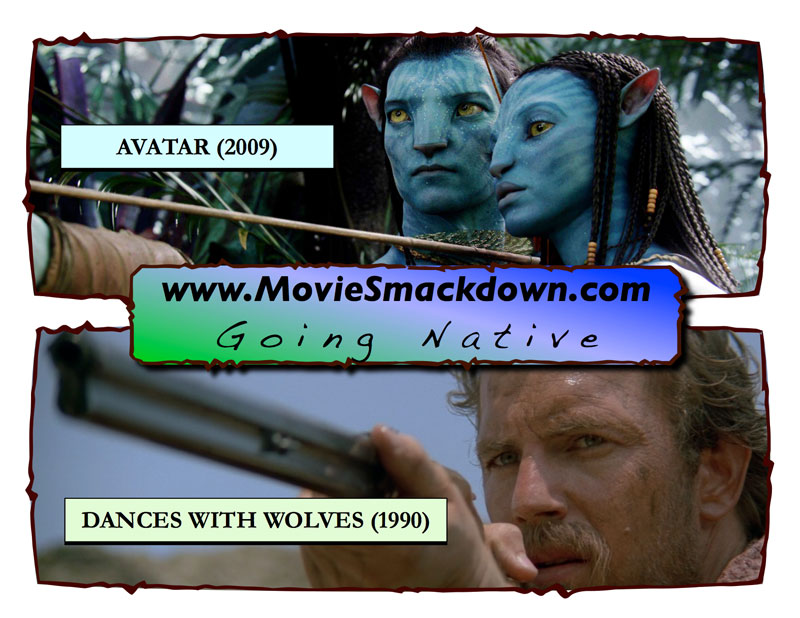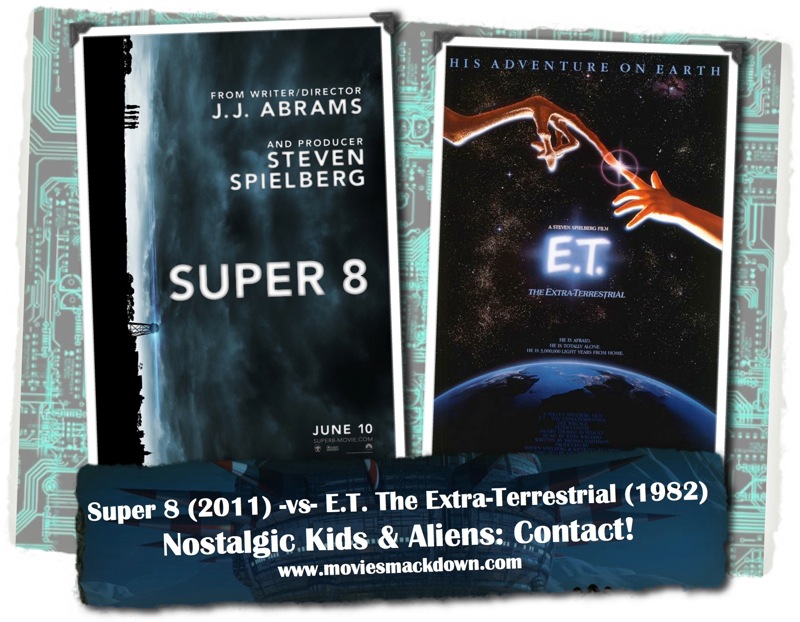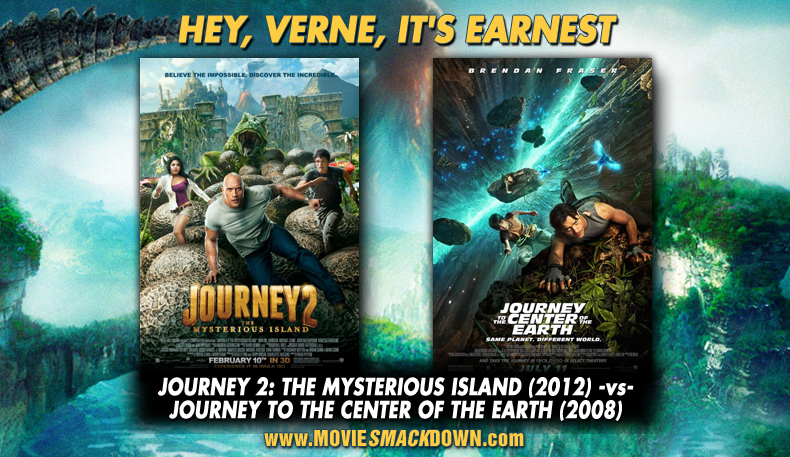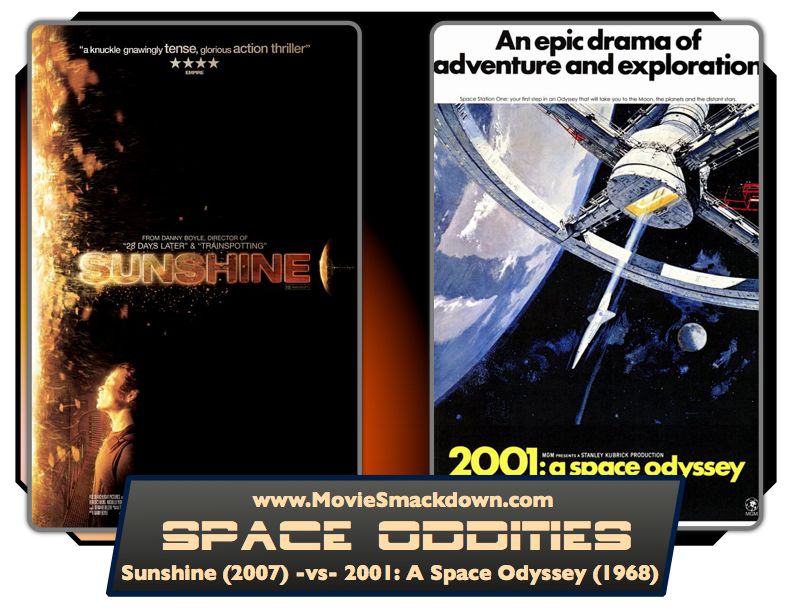
 The Smackdown
The Smackdown
Allegorical movies are tough. Â On one hand, the social messages are essential to keeping cinema relevant and meaningful. Yet I always grow wary of a movie made for the sake of a message and not for the sake of entertaining audiences. The best way to judge that may be to measure Avatar against another film that it shares some themes with: Dances with Wolves.
Both films, for example, discuss imperialism against the epic backdrop of human emotion and struggle — only one does it here on Earth, the other on a faraway planet. But what about the entertainment value? The story? The characters? Which film goes the farthest beyond preaching and instead involves its audiences in the big question: What would it take for me to go up against my own kind?
The Challenger
Cameron’s first feature film in over a decade (since the box-office titan Titanic), Avatar takes place on Pandora, a tree-hugger’s wet dream of a planet, rife with glowing plants, floating mountains, glorious waterfalls, prehistoric-esque monsters, and pissed Na’vi inhabitants who want humanity to bugger off and stop destroying their planet. Why are we destroying their planet? Well, we’re mining for their oil– I’m sorry, their “unnamed gray rock mineral” that sells for millions. But the story is really about Jake Sully, a crippled Marine who synchs with a hybrid Na’vi/human “avatar” and infiltrates the tribes to learn their ways as a Na’vi. When a radical colonel forces the Na’vi to resettle away from a huge mineral deposit, Sully must choose between the Na’vi culture he’s learned and his own humanity. With breakthrough 3D visual effects and good ol’ fashioned Cameron-action, Avatar is a three-hour allegorical look at the environment, imperialism, corporatism, and any other “-ism” that should help with white man’s guilt and those lovely Golden Globe/Oscar nominations.
The Defending Champion
Kevin Costner both headlines and directs Dances with Wolves, the Civil War-era tale of John Dunbar, a disillusioned Union soldier who must choose between his patriotism and humanity, as white settlers and rival tribes threaten his new Sioux friends. Rife with violence and epic emotional melodrama, Dances with Wolves was the sort of blockbuster that bulldozed the box offices in its time. Ambitious with its long stretches of scenic cinematography and cultural nuances, the film was hailed by Congress as historically relevant and even earned Kevin Costner honorary membership by the Sioux nation.
The Scorecard
As with most of the films I reviewed this year (Star Trek vs. Wrath of Khan, District 9 vs. Alien Nation), it’s hard to approach the massive technical gap between these two films. Avatar is simply an amazing technological achievement that will blow people away, and Dances with Wolves can’t really stand against it on a technical level. Every detail of Pandora (although familiar) is executed with such a high degree of anal retentiveness that you can’t help but be drawn in. This is, no doubt, helped by the 3D aspects, which are employed in a way that doesn’t bring the movie to you (as some reviewers are saying) but actually brings you to the movie, pushing you into the depth and detail in a way that had me almost turning my head to look around me, as if the scenery was passing as I watched. Also, quite frankly, the film has some of the most amazing visual moments that I’ve seen in recent years — just watch Pandora’s flying creatures banking hard down a cliff base toward the ocean as massive waves crash against rocks and cascade over the flying flock.
It’s breathtaking, as are the momentous action sequences throughout the film.
So, we’re past that. We can move on to what no amount of visual effects, hype, and cool Halo-like production design can cover: story.
Dances with Wolves and Avatar have very similar stories. To say that Avatar steals from Dances with Wolves is unfair, as the tale of an oppressor fighting against his own after experiencing the majesty of the oppressed isn’t new at all. District 9 tried (and failed) to do it. Hell, even The Little Mermaid did it in a way. The thing that separates these two films is that Avatar has a more compelling and interesting protagonist in Jake Sully when compared to Dunbar. At Wolves start, Dunbar is so fed up with the Civil War that he tries to commit suicide. By providence, he finds a way into a new world with the Sioux that offers him the peace he had been searching for from the film’s starting moments. To say that Dunbar has to “choose” to go against his own people is erroneous, as there is no dramatic weight to the choice. He was ready to desert his Union compatriots via suicide within the first five minutes of the film. Really, if a person’s at the suicide levels of the proverbial barrel, anything above that is really an upgrade…
Sully on the other hand is all hoorah about mining Pandora — or at least indifferent, which is somehow worse . Recently crippled, Sully is eager to prove he still matters as a man and marine, and falls under the corruptive influence of Colonel Quaritch, an over-the-top villain who many times threatens the delicacy of the film’s social message with his campy characterization. At first, I thought maybe Sully would just do anything to walk again, as his Na’vi avatar allows him to not only walk, but move with superhuman agility. But seeing Sully use that avatar to show Quaritch that he is a loyal and effective marine makes Sully’s arc a matter of proving one’s worth despite a handicap.
Being this is the case, Sully becomes a much more involving character. Unlike Dunbar, who essentially absorbs the Sioux culture as a welcomed substitute for his own, Sully is frustrated with the “tree-hugger” culture of the Na’vi, who believe in the interconnectedness of all things and the spiritual potency of Elwa (Pandora’s literal soul). So there’s more dramatic conflict and irony to him having to adapt to and infiltrate the Na’vi culture, and a real hard choice is made when he decides to forgo his former life and uphold a totally different way of life.
The differences between these two characters’ journeys is summed up by a line one of the Na’vi throws at Sully when he tells them he wants to learn their ways. “You cannot fill an empty cup.” She’s right. That’s why its so damn interesting to watch the Na’vi fill Sully’s cup. Now take Dunbar, whose disillusioned cup is already empty and ready for some new culture to be poured in. The dramatic questions are lessened since we know Dunbar will accept the Sioux culture because he’s looking for something else already, and worse, Dunbar knows he is looking for more. Sully is not even on that plane of self-awareness and thus, a more interesting character to follow.
So let’s talk women, shall we? Unfortunately, these type of stories seem to rest on a notion that in order to understand how another culture lives, you have to fall in love and mate with one of them. (This spells a certain amount of doom for the Gay Right’s Movement). In Dances with Wolves, Mary McDonnell is our post-coitus cultural liaison, the adopted white daughter of a Sioux tribe, who Costner rescues. They fall in love, and she helps him achieve his assimilation into Sioux culture, and later provides a dramatic counterweight as the climax approaches. It’s rather simple, even by early ’90s standards, and no matter how much I love McDonnell for her role as Laura Roslin in Battlestar Galactica, this role was woefully beneath her and almost insulting to watch her play.
In Avatar, our girl is a Na’vi princess named Neytiri, an agile huntress whose father orders her to teach Sully the ways of the Na’vi. Begrudgingly, she does so and finds herself drawn to Sully, eventually falling in love with him as he proves he is a capable Na’vi warrior. What’s great about this symmetry is that the love story actually helps the antagonist of the film, for as Sully learns their ways and Neytiri falls for him more because of it, our crazy colonel learns more about what cultural aspects he can manipulate to force the Na’vi off their lands. It’s one of the more genius storytelling moments in this familiar story, and it’s moments like these that prevent this film from simply being a regurgitation with a steroid kick of CGI. Also, unlike Dances with Wolves, the fact that these two future lovers start out as rivals is a tried-and-true storytelling technique that works very well here, and adds a lot of weight to the second half when Sully’s betrayal is made known to the Na’vi tribe.
This isn’t to say that Avatar is flawless. It has one unforgivable flaw that is near criminal.
It’s dialogue.
Dance with Wolves dialogue is rather traditional and really doesn’t bring attention to itself outside of the expected translation scenes between Dunbar and the Sioux people. However, Costner’s readings of his journal entries are really just pathetic and sound more like a Hooked On Phonics commercial than cinematic voiceover. It’s worth noting that Avatar also has Sully narrating his journey in video journals, only Avatar really does nothing substantial with this as opposed to Dances where Dunbar’s journals motivate the climactic moments of the film. Sully’s voiceover reminds one of the infamous Blade Runner voiceover that eventually was cut in later editions. It doesn’t help that the journals are filled with silly and on-the-nose dialogue, which — as I said — is a huge flaw with Avatar.
Some of the most cliched and over-the-top one-liners in cinema history are spoken in Avatar. Most of the character introductions (especially Sigourney Weaver’s Grace Augustine) function exclusively on cliche witty banter like, “they’re pissing on us and not even giving us the courtesy of calling it rain.” However, no one in this film can top Stephen Lang’s Quaritch in terms of just toilet bowl dialogue. He growls frequently, saying “these scars remind me of what’s out there” or “I’m not leaving until I can’t breath” (to which Sully responds, “I was hoping you’d say that.”). He loves his Wizard of Oz puns, and delivers at least four Patton speeches full of hyperbole, stereotypes, and enough alpha-male testosterone to put Roseanne Barr to shame. At one point, I was expecting us to discover this was all overcompensation for the colonel and Quaritch would turn to Sully and say, “Do you like gladiators, Jake? You ever seen a grown man naked?” But by far, my favorite Qauritchism (does that work?) was his subtle set up of the film’s political allegory with “we’re gonna fight terror with terror!” What’s worse is if you watch the film there is not one instance of Na’vi terrorism on the humans, which makes the line even more ham-handed.
And this highlights another one of Avatar‘s major flaws, not just when compared to Dances with Wolves but also as a film itself. The antagonists of Avatar are just too two-dimensional– hell, they’re one-dimensional! There are three “bad” antagonists in Avatar, the main of which is the aforementioned Colonel Quaritch, who rigidly pursues the Na’vi with no real motivation outside of simple racism and the fact he got scarred by one of them. However, that hate seems ridiculously superficial if it’s to motivate the near genocidal acts Quaritch commits later in the film, and really robs him of the emotional complexity that makes Sully, Neytiri, and Weaver’s Augustine so interesting. A moment of humanity, of at least warped self-rationalization on the part of Quaritch, would’ve gone a long way to making the film more balanced.
Second is Parker Selfridge (get it? Selfish?), a corporate-man who just worries about the quarterly report, and along with Quaritch, spews out the same hate-filled lines regardless of what’s happening. He has a momentary shift at the end, but its too ambiguous to really appreciate, and the audience is left wondering what Cameron was trying to accomplish with it. Lastly is Tsu’Tey, Neytiri’s brother who despises Sully for most of the film. He does have a last minute change-of-heart at the film’s conclusion, but it comes across as forced and moot since Cameron made him so dislikable over the film’s first two hours. Dances of Wolves uses a more complex matrix of antagonists, from insane generals to rival Indians to paint a landscape of hostility that Dunbar must help the Sioux navigate.
Lastly, let’s talk about emotionality. Let’s face it. These films are all about making us feel something, and this is where Avatar crushes Dances with Wolves. What is so great about the 3D technology and VFX in Avatar is they serve, ultimately, to make you fall in love with this beautiful planet just as Sully does. As Quaritch readies to destroy it for mere resources, you are appalled and rooting for everyone to save this gorgeous place, rendered wonderfully real in 3D-CGI. It’s not just CGI for CGI, and I don’t think Cameron could’ve gotten audiences to feel that way about beautiful Earth-like vistas (which is more reflective of our society rather then Cameron’s filmmaking). One of the more emotional moments in Avatar concerns the Na’vi Hometree, and it’s Cameron’s careful set up of the tree that earns the emotional beat in spades. The climax rests on this same careful manipulation of beautiful CGI as well.
So, now here’s the part where I cried. I will not spoil it totally. But this climactic scene involving Neytiri and Sully was delayed until the last possible moment, and when it occurs, it tugs at the heart in all the right ways and really gets to what this film is about. It’s just… beautiful…
And that’s why Avatar succeeds, and not so much in the way that Cameron said it would. He promised he would give us a new way to look at cinema. He doesn’t at all. What he does is more important. Cameron reminds us what cinema is about (much like the fun of Abrams’ Star Trek this year). It’s about emotion, excitement, and the “wow” moments. The times when we hold our breaths, our bodies flush, and we must offer ourselves to a world so much larger than the one outside the cineplex doors. This isn’t anything new by Cameron, it’s just a welcomed return to a form of classic storytelling that’s not worried about running times or demographic quadrants and instead aims to manipulate you.
The Decision
This is Avatar all the way. While Dances with Wolves has the cultural prestige, Avatar has cinematic prestige. And while we can appreciate the messages in both films, we go to the movies to be entertained and to feel something. Avatar gets the audience asking the right questions, not only of the world on screen, but of our world. And while it sometimes slips into simplistic messages to do so, it ultimately uses the emotion behind the narrative to even it all out. It’s sad that lately we have to go to other planets to find good movies, but my trip to Pandora in Avatar was a welcome visit for a person who thought this movie was all hype. Damn you, Cameron, I was wrong…




Both films owe a lot to David Lean’s epic masterpiece Lawrence of Arabia and neither holds a candle to it. Visual storytelling at its finest, LOA is the greatest film I’ve ever seen. The match cut still gets me. Spielberg called the film a miracle; I couldn’t agree more (check out Spielberg on LOA http://www.youtube.com/watch?v=OX3bqRemW8U)
They should do a smackdown of Avatar vs Lawrence of Arabia.
John, we try to stage only fair fights. –ed.
Fair point Eric. However, Avatar has won both its matches here so it must have its fans among the staff not to mention a fair amount of lay fans. Both films share much in common and with the 50th anniversary of Lawrence and subsequent blu-ray release last year, now would be a perfect time to do it. Heck, you could even do a side-by-side smackdown with an argument written by an Avatar apologist and a LOA apologist.
Avatar was a good movie, but to me, Dances with Wolves, was much more enjoyable and a better movie as well.
avatar is much better than dances with wolves
avatar is perfect
Hey OP, the line, about eight paragraphs down, where you say, “The differences between these two characters’ journeys is summed up by a line one of the Na’vi throws at Sully when he tells them he wants to learn their ways. “You cannot fill an empty cup.” is quoted wrong.
The actual quote is “it is hard to fill a cup that is already full”.
To the OP. If the last moment your referring to is the same one that me tear up… you are right, it was perfectly placed. So much so, it didnt even occur to me that it had not happened earlier in the movie… he held out on that bit till the very end. And it blew me away.
I know many ppl will not like Avatar… but even after seen it again with the added minutes (which I suggest the OP to go see) it is one of the only movies to literally give me goosebumps (and not because the AC was cranked on high).
You’ve miss quoted the movie when you say “You cannot fill an empty cup.”
That doesn’t make sense in the context. The line is, “It is hard to fill a cup that is already full.”
Sully replies, “My cup is empty. Trust me. Just ask Dr. Augustine. I’m no scientist.”
I interpreted it as she is talking about perspective; that humans already have a perspective about life and the world and therefore can’t or don’t want to understand the planet’s complex nature. I believe Sully thinks she means intelligence, and his line implies he considers himself unintelligent when compared to the likes of the scientist.
So I would argue that his “cup” is full at that point, reinforced by when he says, “There’s no such thing as an ex-marine. You may be out, but you never lose the attitude.”
Then he spends part of the film emptying the cup of his human preconceptions and refilling it with that of the natives appreciation for nature.
I thought this video might clarify and amuse.
Enjoy:
http://vimeo.com/9389738
Come on, this gotta be a joke! Comparing an oldschool 2 decade-old film that was made in the 80’s and released in 1990 to a current Gen one. Back then there was no CGI or 3D or HD. DUHHH!!! I am a video gamer and it’s like comparing the original Nintendo NES Mario Bros with Wii’s Super Mario Galaxy regardless if they have the “same basic story”
Yeah, story is lame, but you do feel something, that’s all I’m saying.
Nope, the story really WAS pretty lame. I could pick what was going to happen well before the event itself. I agree with just about everything Stephen had to say. Especially the script: James Cameron needs to direct a script somebody else has written. The man has always had a tin ear for dialogue, ESPECIALLY dramatic/romantic dialogue, and not just the jingoistic military-isms he peppers his films with. I’d like to see him have a crack at someone elses words. But man, he CAN direct action.
Probably being a tad too hard on the story, but I agree.
I won? I WON!!!
I’d like to start by thanking God…er…or is that James Cameron now?
Oh god I hope he doesn’t read my comment. I am NEVER getting a job now :\
Stephen… You now have the distinction of having written the most comprehensive Movie Smackdown comment of all time. Congratulations, your prize is in the mail!
OK so I watched the film in IMAX 3D and a few things occurred to me while watching it. Just to prepare you, its a mixed bag:
1. This is definitely a technical game changer. There’s no doubt about that. It will definitely affect they way SOME films are made in the future and actually gave me a reason to like 3D. Absolutely wow-ing visuals, the best use of cgi and motion capture ive ever seen.
2. Sigourney Weaver’s performance felt SO forced. I don’t think even she was buying the shit she was saying.
3. There is really nothing surprising in terms of story, its pretty paint by numbers and anyone that’s seen a few action movies should know where its going.
4. The character development was incredibly shoddy. People just did things without any real reasoning, and the supporting characters came in and out of nowhere with largely nonexistent arcs. I almost wish the movie was 20 minutes longer so I could understand who these people were, why they did some of the things they did, and maybe I’d actually care about them.
5. James Cameron is a cinematic genius, but he severely needs to get over himself and hand the script to someone else. Why were the characters with the most natural sounding dialogue the aliens? And I realize it’s sci-fi lingo, but if you’re trying to make a really detailed universe, think up a better name than Unobtainium. And who else laughed when you heard the words “The Hallelujah Mountains?”
6. The world felt real and thats the most engaging thing about the movie. The audience definitely falls in love with Pandora and thats a credit to Cameron. Not sure I really saw Sam Worthington fall in love with it tho.
7. Amazing action sequences. Thats probably an understatement.
8. Sam Worthington got better over time. I think I preferred him as a big blue alien, so I’m not sure what that says about performance. But I felt that way about Sigourney Weaver too. Actually, I’d prefer if all the humans had been Navii. Which leads me to…
9. Zoe Saldana. Hands down the bright spot in this film. She blew everyone else away.
10. It’s anti-war, anti-exploitation, way green, and way in your face about it. Subtlety is not something Avatar knows too well and it is hell bent on smashing its themes over your head until you bleed. I respect and believe in the message, but could do without the preaching. Even my liberal ass started to groan.
11. The dialogue. Yea I mentioned it already, but it’s that bad. Avatar is chock-full of some of the WORST dialogue I have ever heard. Most of the time it’s so corny you either laugh or cringe at it. I tried to find reasons for why he might make his characters sound so shallow and stupid, like maybe he wanted the humans to sound like asses while the Navii sound normal for thematic reasons, but that doesn’t hold up for me. It was just bad dialogue, plain and simple. If he did have some reason for it, it was a very misguided decision.
“Avatar” did have quite a lot of hype centered around it. I actually never hopped aboard the “Avatat will change your life” bandwagon. Before it came out, I was just hoping it would be good. I agree though. It was absolutely stunning filmmaking, and yes the dialogue was cringe-worthy a lot of the time. Cheesy one-liners are the worst. The story was engaging however, and for that reason (aside from the fact that it was the most eye euphoria I have been exposed to in 3 hours time) I feel it ranks high up there this year.
I think the whole “Avatar” thing is a fanboy phenom. Me and my girl friends really thought it was not so special.
Costner can suck it!
I agree wholeheartedly that Avatar is the victor here. I also saw it in 2D and am waiting to build up my patience threshold again to go see it “the way it was meant to be seen.” Although the film won me over for the most part, I am still unsold on the dialog, and just lack of character depth for most of the cast. For some reason, Avatar bore a strong resemblance in my mind to Fern Gully. Anyway, I really enjoyed this review. Hoorah!!!
“Damn you Cameron, I was wrong.”
Found myself saying the exact same thing about an hour and a half into the movie. Though it definitely lacks in some story elements as you pointed out, Avatar was quite the experience as an enjoyable movie that was fun to watch. Reading this definitely helped me pinpoint some of the issues I had with the film where things just didn’t “feel” right. A good, thorough review with plenty of valid points. Avatar over Dances With Wolves any day.
The film also suffers from the all-too-typical want to make alien representations for minority groups? Graft cultural stereotypes (voodoo chants and magic; dreadlocks; Asian spiritualism; Indian nature mysticism) and shove them all into non-white alien characters who are naive and simple-minded, thus unintentionally buffering the otherworldly inferiority stereotype these cultures face in our own society.
To have dreadlocks is alien? I wasn’t aware.
That’s why X-Men did it so well, and I haven’t seen a film do it as good since. You don’t make the “minority characters” simpletons, you give them something that makes them different (and in some cases superior) like kick-ass powers, and then let society react in a way that reflects on how we do it here in our society. Stan Lee’s a genius, so is Bryan Singer.
I agree. The film’s strength and weakness is its simplicity, and it didn’t know where to draw the line when it came to the Na’vi. When Quaritch shouts, “We’re gonna fight terror with terror,” you go, “Huh?” The Na’vi were near-perfect, and this highlighted some illogical choices by the Na’vi, such as the Na’Vi King forcing his hot and sexy Na’vi daughter to rear the Marine in their ways? How is that wise? But it’s played that they’re too naive to really notice that they’re teaching a SOLDIER how to infiltrate their society. Seem really shoddy.
But yes, some extreme Na’vi doing crazy things to humans — like kidnapping one of the workers and killing him. Then, have the Na’vi rulers punish these extremists in an effort to maintain the peace. This would’ve balanced the film and more accurately reflected the nuances of the film’s major dramatic issue. Right now, the Na’vi are a tad too innocent, and the humans just utterly disgusting. The worst we saw of Na’vi offensiveness were the arrows in the tires of the huge bulldozers that are bulldozing…their land…
Cameron does come dangerously close to neutering his own contemporary message by building the film’s themes on straw-man characterizations that just don’t exist anymore in reality.
Okay, I’ve been thinking more about the film as the day goes on. I guess I wish it wasn’t so stereotypical about military bloodthirst in its effort to create bad guys and good guys. I’d like some more shades of gray. Specifically, our military these days goes out of its way to learn how to deal with the locals (these were hard won lessons that I’m sure will not so easily be surrendered, even on Pandora). So I think the military is evolving in the opposite direction that Cameron seems to suggest.
However, if for conflict sake he needed to paint black hats and white hats, how about making the Na’vi a little less perfect? What if they were staging raids on the Earthlings who ventured out onto the planet, taking individuals out with their arrows and we saw a little more of that? Maybe the military leader could have lost a lot of friends that way and have lost his mind a bit.
I don’t know. It’s a great film, but I kinda think there’s a lot to like about Earthlings and I’m suspecting that the more we find out about Extra-terrestrials that we won’t think so kindly of all of them.
Best Film, as in the film that I enjoyed watching the most. If we’re talking about best being “important” or values like that, maybe something else.
Woah, Bryce. Best film?
Hm, I don’t know if I can get aboard that train but I can’t wait to do my End of the Year Showdown.
Best film….hmph, wait until you see it in 3D.
We only saw it on 2-D tonight, but I’m still blown away. Yeah, it’s a little heavy-handed in its human-bashing but, man, is it beautiful and wondrous and imaginative in a thousand other ways. We’ve witnessed something really amazing here. I can’t wait to see it in 3-D. I know this will set off all kinds of screams and insults but (for me) it’s the best film I’ve seen this year.